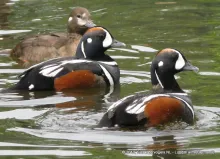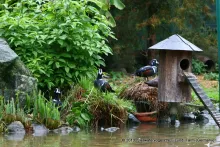
Harlequin Duck (Histrionicus histrionicus)
Species name
- Dutch name:
- Harlekijneend
- English name:
- Harlequin Duck
- German name:
- Kragenente
- French name:
- Canard arlequin
- Scientific name:
- Histrionicus histrionicus
Scientific classification
- Order:
- Anseriformes
- Family:
- Anatidae
- Onderfamilie:
- Merginae
- Genus:
- Histrionicus
Description
- Description:
Male:
Head, neck, body and wings dark slate – blue and black , richly patterned white and chestnut . Head and neck with purplish sheen. White cheek patch extending into thin line above eye, becoming Rufous to rear under black crown ; rounded white spot behind eye and vertical white stripes, bordered black, around base of neck and down side of chest .Large chestnut patch on flanks ; tiny white spot each side of rump at base of pointed black tail . White tertails and black and white scapulars. Upper wings and under wings dark slate with a purplish speculum; a few white spots form short, indistinct wing bar. Bill, feet and legs bluish –grey.Female:
Unifourm dull olive-to blackish – brown, darkest on head, with center of belly speckled whitish. Two whitish patches in front of eye, lower one larger, and clear white circular patch behind eye. Wings dark above and below. Bill dark slate –blue; legs and feet grayish.Juvenile:
Upperparts paler and underparts more spotted. Male features start to appear during first winter .Contains full adult plumage 2nd winter.
- Behaviour:
The Harlequin Duck has high food energy requirements, probably because of its relatively small body mass and high metabolic demands, especially in colder parts of its range. Because a small bird can store fewer reserves than a large bird, Harlequins are less suited to survive extremely cold and stormy weather. They must feed continually to maintain their metabolism.
Standard Measurements
- Body Length (cm):
- The male (drake) of the Harlequin Duck measures approximately 38-50 centimeters. The female measures approximately 38-50 centimeters.
- Body Weight (grams):
- The male will weight about 675 gram. The female will weight about 535 gram.
The weight is notoriously variable and can only be used as indication!
- Habitat:
Harlequins are very lively ducks. The ducks can usually be found on or around the water. It is preferable to have several small ponds instead of one large pond. Place groups of large pebbles or rocks around the pond edge so that the ducks have good resting places near the water. An aeration system in the pond not only keeps the water oxygenated and clean, the Harlequins enjoy visible of the movement in the water. A water circulation (waterpump) is even preferred. Keep the surrounding area around the ponds open. It is important that the wind has free space.
- Note:
Harlequin ducks have not been commonly kept or bred, but they have become more numerous in collections in recent years. It is important to provide these ducks with clear, running water, which should preferably be 1m deep or greater for at least half of the water area. Scanty and closer vegetation cover near water should be provided for nesting, also ground-level boxes. Ducklings may be difficult to get feeding initially.
Sea ducks are preferably kept on a large area of clean, cold, deep water, at least some of which (preferably half the area) should be more than 60cm and preferably more than1m deep. As with other diving ducks, most species are relatively ungainly on land and ponds should have shallow sloping banks. Some cover along the pond edges will generally be appreciated. Preferred nesting sites vary greatly within this group, from open ground nesting to thick vegetation and tree holes.
These ducks generally need a higher-protein diet than most waterfowl species and high-protein pelleted diets specifically designed for seaducks are now available, although supplementation with fish may still be important particularly for breeding. Ducklings may be given high-protein starter floating pellets and mealworm, and provided with access to deep water for swimming from an early age.
- Breeding:
- The female Harlequin Duck usually lays from 3-8 cream to pale buff eggs and incubates them for 28-32 days.
- Artificial incubating:
The ideal relative humidity for incubating most waterfowl eggs is 55% (ground nesters) and 40% (cavity nesters). The temperature is usually 37.4°C. Set ventilation as recommended by the incubator manufacturer. Eggs must be turned, either automatically or by hand, a minimum of 4 times a day. As the duckling develops there is a loss of water from the egg and the air sac gets bigger. In normal development of an egg with a 28-32 days incubation, the air sac occupies about a third of it three days earlier. Cleanliness is vital and ideally eggs should be moved to a separate hatcher at this point, where the humidity should be increased to 65% and even higher once they have pipped internally.
- Bird banding:
- Recommended closed leg band ring size for the Harlequin Duck is 9 mm.The leg band ring can only be applied on a young small sea duck at around 12 days old.
- It doesn't matter what leg that you band, but it's good to have a consistent system. Suggested: Left leg = Female, Right leg = Male
- Rearingfeed:
-

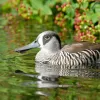

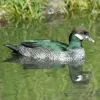
The best floatable special rearing feed from Lundi. This ideally balanced complete feed with 42% protein forms the perfect basis for the successful rearing of your ducks. The ducks grow well and have their perfect juvenile plumage after a short time.
Made exclusively from wholesome and selected raw materials, Lundi Micro 45 is also ideally suited for year-round feeding of waterfowl.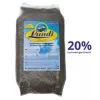
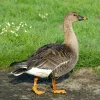

Floatable special rearing feed for all types of aquatic ornamental fowl - especially for the cultivation of trees as well as greening ducks.
This well-balanced complete feed with 20% protein content convinces above all by its good compatibility and forms the basis for visibly healthy growth from day one.
Made exclusively from wholesome and selected raw materials, Lundi Micro Regular is also ideally suited for the year-round feeding of waterfowl.
- Maintenance food:
-


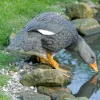
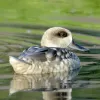
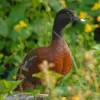


Floatable special complete food for sea birds with the highest nutritional requirements. Each chunk contains the complete nutrient spectrum. The high protein content of 35% ensures a healthy and species-appropriate diet. Spiral algae give a more magnificent coloration of plumage and sea salt promotes the salt gland.




Floating special complete food for sea birds with the highest nutritional requirements thanks to a particularly high protein content of 45%.
Ideal for daily feeding in animals that eat a lot of protein in their natural habitat. A must for "fish eaters".
- Regulation:
- Europese soort
- Regulation:
Het is niet verboden om deze vogels te houden die van nature in Nederland voorkomen, op voorwaarde dat deze vogels in gevangenschap zijn geboren; nakweek dus. Deze vogels zijn voorzien van een gesloten pootring. Het is wel verboden om deze vogels te houden die in het wild gevangen zijn. Alleen bepaalde instanties, zoals vogelasiels en vogelhospitalen, zijn bevoegd om jonge en gewonde wilde vogels te houden. Deze bescherming van vogels wordt vormgegeven door schadelijke handelingen te verbieden zoals:het doden, verwonden, vangen, bemachtigen en met het oog daarop opsporen van vogels (art. 9 Flora- en faunawet); het opzettelijk verontrusten van vogels (art. 10 Flora- en faunawet);het beschadigen, vernielen, uithalen, wegnemen en verstoren van nesten, holen of andere voortplantings- of vaste rust- of verblijfplaatsen van vogels (art. 11 Flora- en faunawet);en het zoeken, rapen, uit het nest nemen, beschadigen of vernielen van eieren van vogels (art. 12 Flora- en faunawet).
